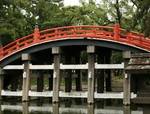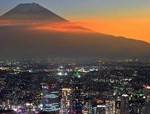Tibet Travel
Tibet travel sometimes known as the roof of the world, Tibet, the mystical land of fantasy is the heart of Buddhist culture and philosophy and the most mesmerizing destinations of the world today as it seems as reserved as ever. It is not only the geographical and natural enchants but also a long historical culture and religion that appeal the foreigners to visit Tibet at least once in a lifetime. Rich and beautiful land with an average altitude over 4,000m (13,120ft) above sea level possessing more than fifty peaks above7,000m (22,960ft), Tibet is home to eleven Himalayan mountains over 8,000m (26,240ft). Bordered by China, India, Nepal, Sikkim, Bhutan, Burma and Kashmir Tibet is home of over two million people of rich ancient cultures.
Spiritual traditions, temples and monasteries, lakes and rivers, and mighty snow clad peaks are just a few of the intoxicating wonders to be experienced by adventurous travelers who get the opportunity to visit this land. You will be enthused by watching how pilgrims brave hostile weather and altitude to visit the holy Mt. Kailash and how they prostrate in the flagstone country yard of the Jokhang, offering incense as they circumambulate the holy Buddhists sites to pay veneration to the Shakyamuni.
You will start from the sand dunes along the Brahmaputra basin. Through the high passes ornamented with colorful flags beating endlessly against the stone cairns, to the blue salt lakes of Namtso, you will travel an ancient trail alive with color, ritual, and history. The own unique cultures and traditions of the Tibetans Monpas, Lhopas, and Moslems and their style of large exciting celebrations will keep you astonished.
Outside the cities, you will meet natives in their long chubas and exquisite turquoise jewelry who will share with you whatever little they have, exhibiting inspiring Buddhist compassion.
So come and visit the land rich in mountains, monks, mystery, and adventure. Catch the truly nomadic lifestyle and share your experience with your friends.
Country Information
Behind the world’s highest mountain range is the mystical land, Tibet. The name ‘Tibet’ means heaven, its derived from the Sanskrit word ‘Trivistapa’. Average heights of over 4,000 m, makes it the world’s highest plateau, crowning it as the ‘Roof of the World’. Tibet is home to some of the world’s tallest mountains, several of them making it to the top ten list. Some of the major rivers of Asia have their source in the Tibetan plateau. With its vast grasslands, high mountains and alpine lakes, Tibet, is surely a dream destination for tourists, climbers and adventurers.
Tibet travel quick facts:
Full Name: Tibet Autonomous Region
Population: 2.62 million
Capital: Lhasa
Area: 1.2m sq km (471 700 sq miles)
Climate: Average temperature 28 degrees Celsius (summer) to -15 degrees Celsius (winter), extremely dry except during rainy season (July-August).
Major Languages: Tibetan, Mandarin, English and Nepali
Major Religions: Tibetan Buddhism, Animism
Life Expectancy: Over 65 years (UN, 2000)
Monetary Unit: 1 Yuan = 10 Jiao or 100 Fen
Main Exports: Light industry products, Output of livestock products, Traditional Chinese medicine and Carpets
GDP Per Capita: USD 1324
Tibet travel getting into Tibet
The traditional saying ‘easy to travel abroad but difficult to enter Tibet’ has become obsolete as one can access Tibet either by road, air or rail.
By Road: There are five main highways in Tibet, namely:
1. Sichuan-Tibet Highway – it runs between Chengdu, the capital city of Sichuan Province, and Lhasa.
2. Qinghai-Tibet Highway – it runs between Xining, the capital city of Qinghai, to Lhasa.
3. Yunnan-Tibet Highway – it runs between Yunnan province and Tibet.
4. Xinjiang-Tibet Highway – it runs across boundless deserts, lofty and steep peaks.
5. The China-Nepal Highway – it is the only international highway in Tibet
By Air: Flying to Lhasa always requires a stopover in either China or Nepal. Lhasa Gonggar Airport is located about 98 kilometers (about 61 miles) to the south of Lhasa City. The only international flight to and from Tibet is between Lhasa and Kathmandu, the capital of Nepal.
If you are looking for information regarding flight bookings please contact us We will provide you with best possible information.
By Rail: The Gormo to Lhasa railway stretches for 1,142 kilometers (710 miles) and serves as a link between mainland China and Tibet.
Tibet travel climate
Generally, April to the beginning of November is considered apt for traveling in Tibet. August and September are considered as the ideal time; however, Lhasa can be visited throughout the year.
The sun radiation is strong in Tibet. Lhasa is also known as the ‘Sunlight City’ due to the extremely intense sunlight there. Tibet is cold during winter; cool in summer and is normally dry, receiving only about 450 millimetres of rain or snow.
Tibet travel accommodation
In most of the cities and towns hotels and guest houses are available. Lhasa boasts of accommodation ranging from simple guest houses to four star hotels. Shigatse, Gyantse and Tsedang offers up to three star hotels. While other smaller or remote areas, accommodation is available mainly in guest houses.
Tibet travel electricity
If you wish to bring along electric devices for use during your stay, a transformer is necessary. Most of the hotels in Tibet have both 110V and 220V electrical outlets in the bathrooms, though in guest rooms usually only 220V sockets are available. As the shape of a socket varies between countries, a portable plug adapter may also be necessary.











